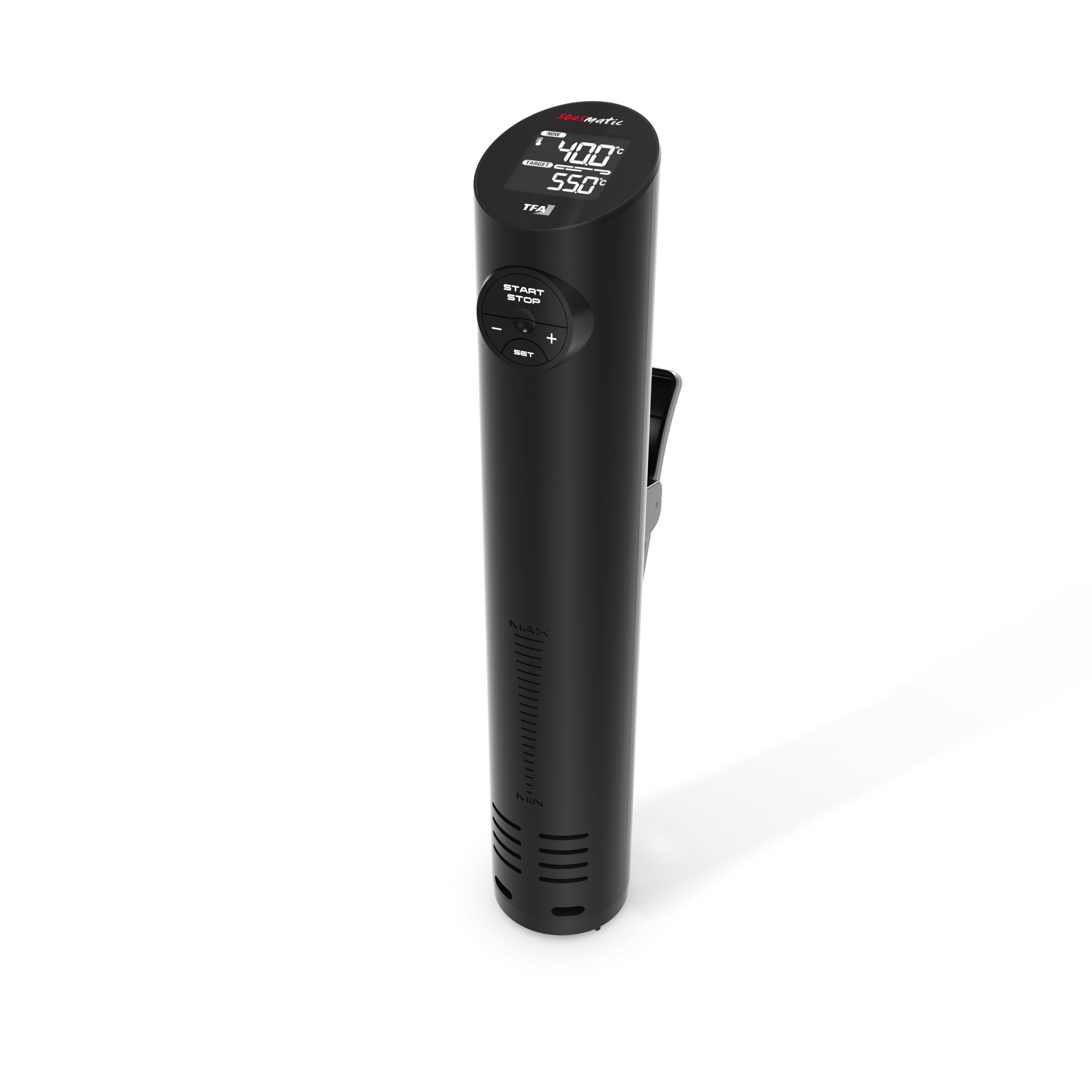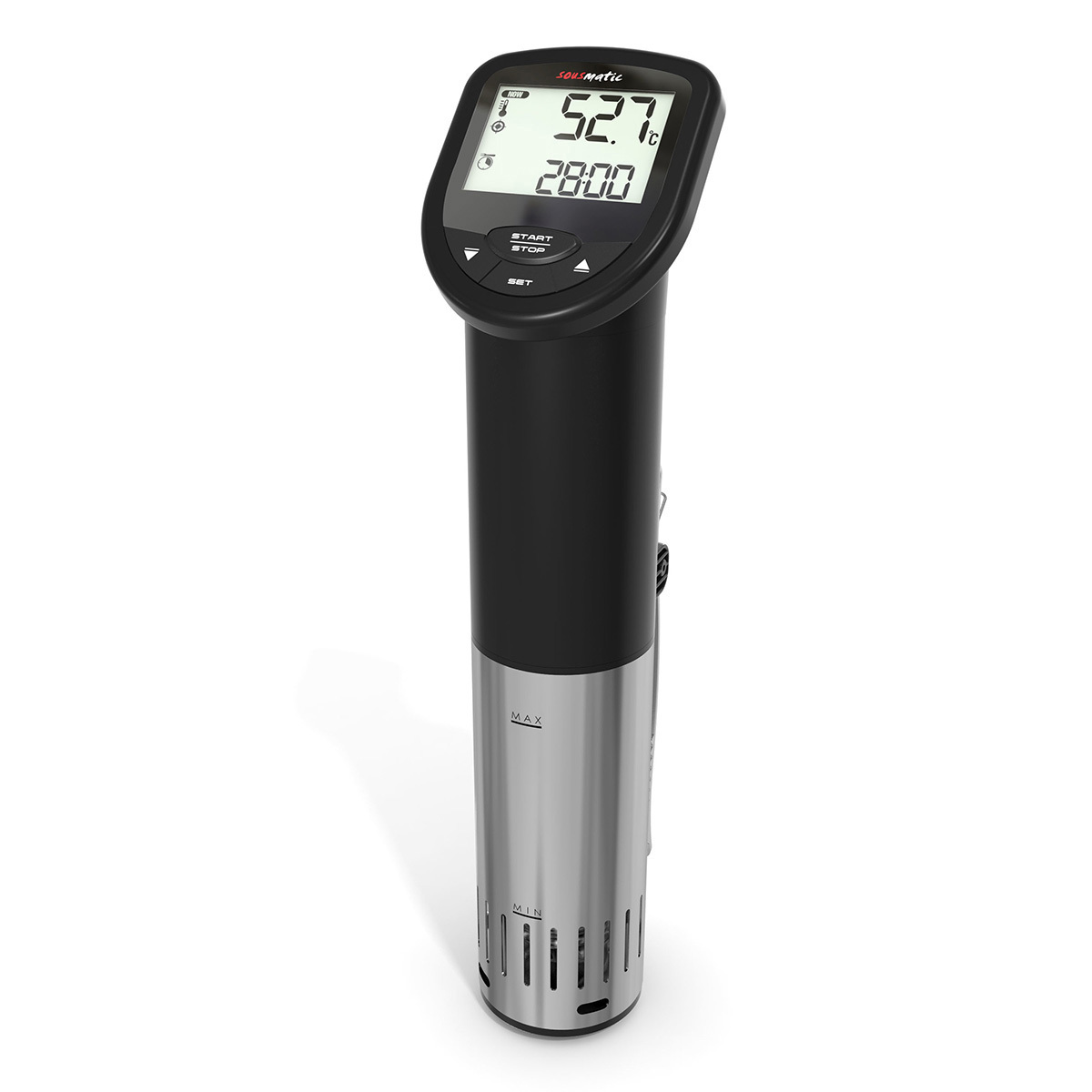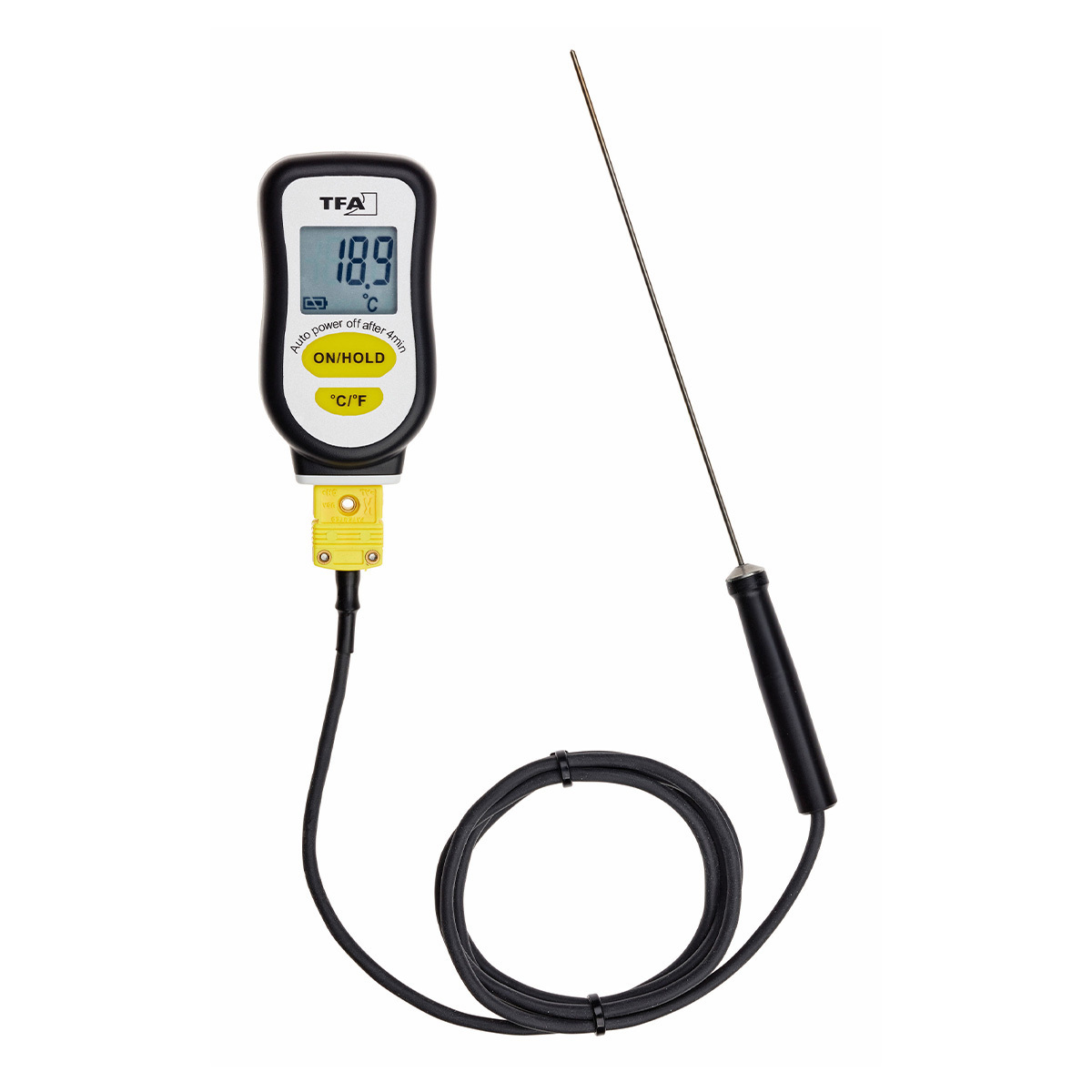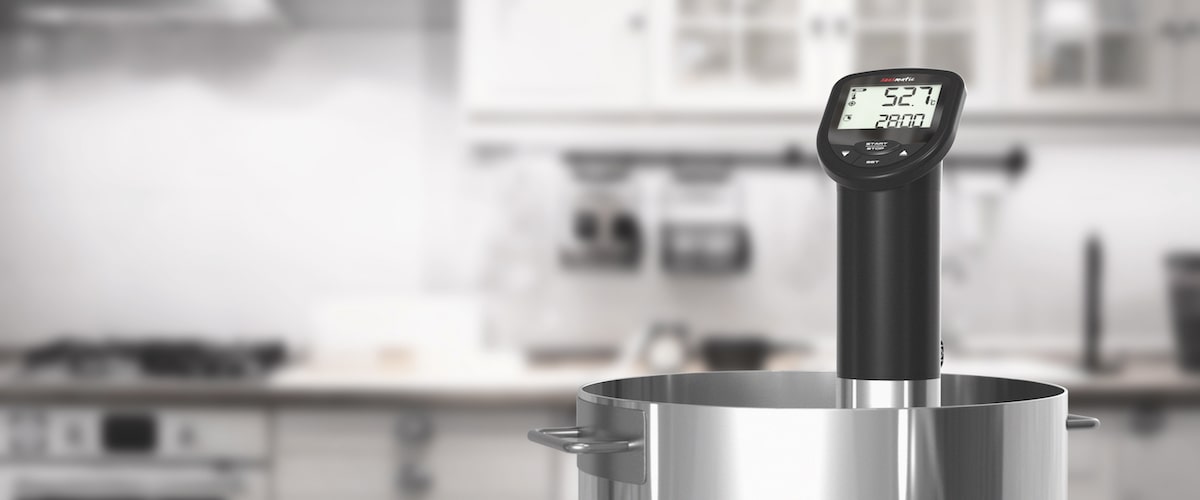
What is sous vide?
Again and again the term sous-vide appears on recipes, whether it is for the preparation of the Christmas dinner, St. Martins‘ goose or the Easter lam.
When we translate the French term, this cooking method is almost self-explanatory: the word “sous” means “under”; vide is French for “vacuum”. Do not be put off by the term, be tempted instead! It is hard to imagine vacuum cooking in top gastronomy kitchens, but the truth is that this is how the most accomplished chefs achieve all the juiciness and flavours in their dishes. How about if you could prepare comparable delicious dishes at home?
How does Sous-vide work?
The cooking method “Sous-vide” is characterized by the fact that vacuum-packed food is gently cooked at low temperatures. The sealed food is cooked in a water bath with the sous vide stick until the desired core temperature is reached.
Why cook sous-vide?
The low cooking temperatures in the water bath preserve flavours and nutrients. With sous-vide, you can prepare not only a perfect BBQ meat, for example, but also a roast beef or goose can be prepared using this same cooking method. You also get tenderness and juiciness when cooking with vacuum.
What sous-vide devices are there?
Sous-vide cookers and sous-vide sticks are an ideal complement to your home kitchen. A sous-vide cooker can nowadays be securely installed in the kitchen or set up as a single device. Due of its size, it usually requires more space than a sous-vide stick.
With the Sous-vide Sticks SOUSMATIC in different designs and colours, you get a practical kitchen helper that can be easily attached to most household pots and pans.
What are the advantages of a sous vide stick?
A sous-vide stick, on the other hand, is compact and therefore very practical. The stick fits easily in the cabinet or a drawer and it is also suitable for using in the garden when barbecuing. Intuitive to use, this convenient kitchen appliance can be attached to almost any pot or container.
Which foods are suitable for vacuum cooking?
There are hardly any limits to the choice of food when cooking in a water bath under vacuum. Meat, fish, vegetables and even fruit can be prepared sous-vide.
What is the temperature for sous-vide cooking?
Most recipes already specify the right core temperature for sous-vide cooking. If you prefer to cook without a recipe, we recommend using our chart as a guide as it has most common core temperatures:
Table of core temperature. You can download and print the spreadsheet to add to your cookbook or whiteboard.
In other cooking methods such as stewing and frying, the temperatures in the middle of the food is measured with a meat thermometer or a penetration thermometer. With a sous-vide stick, this step is taken away as the device keeps a constant temperature in the water bath.
Read the appropriate temperature in the core temperature chart and adjust the stick accordingly. you can take care of other things, such as to prepare other food or have a little rest while the desired degree number is being reached.
Sous-Vide Tips
When to seasoning the food with sous-vide cooking?
Depending on the recipe and taste, you can add seasoning (herbs, spices, etc.), marinades or spice rubs in the vacuum bag with the food to be cooked. This gives meat, fish or vegetables a great aroma.
Most herbs and spices are excellent to use with sous-vide. Fresh garlic tends to produce unpleasant results, so it is better to replace it with powder. Olive oil tastes metallic after long cooking times. Therefore you should switch to grape seed oil.
While vinegar, fruit juice, buttermilk and yoghurt marinades are unproblematic, alcoholic gases are produced in wine – provided the alcohol has not been overcooked – which lead to uneven cooking. Boiling the alcohol before preparation solves this problem.
Keeping food warm with sous-vide
Once the food has completely reached the core temperature, it remains unchanged – even if it is left in the water bath for longer. Hygiene is particularly important because sous-vide cooking is carried out at low temperatures. If you want to be on the safe side and avoid bacteria and pathogens, it is recommended to keep the food warm above 54.4°C. This is even possible for up to 8-10 hours with most foods.
How do I reach roast aromas during sous-vide cooking?
Sous-vide is basically a technically controlled poaching. Fish, shellfish, eggs, skinless poultry and some meat dishes are ready to serve after the core temperature is reached. Steaks and other pieces of meat that are normally barbecued or fried should be fried again briefly and seasoned to achieve the “Maillard reaction”. This complex reaction between amino acids (protein) and reduced sugar produces roast aromas that should not be put in the bag before sous-vide cooking.
What can go wrong during sous-vide cooking?
- Vacuum bag not properly sealed: water penetrates through an open seam
- Hole in the vacuum bag: water penetrates during cooking
- Sharpened object, e.g. bone, water can penetrate through the hole
- Air in the bag: smooth cooking is difficult
- Cooking temperature too high: cooking level is exceeded
- Too much seasoning: the own taste is strongly superimposed
- Too much salt: the food loses too much moisture
- Raw vegetables with meat: The vegetables do not cook below 95°C and do not release off any taste in the food.
Lime scale can also reduce the enjoyment of vacuum cooking. With citric acid, however, you can quickly eliminate this. Read our guide: How to decalcify my sous-vide stick?
Sous-vide: in short
Weather you are expecting guests or want to prepare a good meal, a sous-vide stick will be a great addition to your kitchen. The gentle cooking keeps all the important vitamins and, at the same time, the own taste of the food. Overcooking is impossible with this method, so a sous-vide stick is a perfect aid for cooking from recipes.
References
Wikipedia: sous-vide


